Samarkand, prospering from its location on the Silk Road, is one of the oldest continuously inhabited cities in Central Asia; some theories propose that it was founded between the 8th and 7th centuries B.C. Modern Samarkand is a thriving tourist center well connected with Tashkent and Bukhara by the railways and providing a variety of accommodations and restaurants to its visitors. It offers travelers from all around the world a deep insight into the history, impressive architecture and reach Central Asian culture.
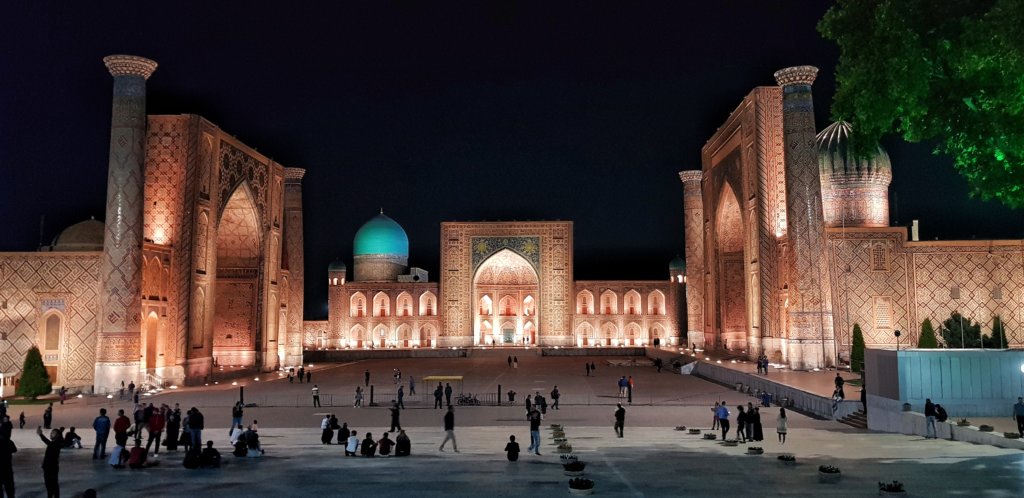
What to see in Samarkand
Registan is used to be a public square and the heart of the ancient city of Samarkand of the Timurid dynasty. Now it is a tourist magnet of the city, an impressive square framed from three sides by the historic Islamic schools (madrasas) built in the 15th and 17th centuries. When you enter the square, you will face the Tillya-Kori Madrasa having the Sherdor Madrasa on your right and the Ulu Bey Madrasa on your left side. The madrasas have beautiful courtyards in the back as well as small shops with traditional Uzbekistan souvenirs. The entrance fee to the Registan complex is 40000 som pp.
The size of the Uzbek mosques and madrasas in Uzbekistan is simply overwhelming! We were trying it hard to capture the whole ensemble in one shot, but often didn’t succeed. One building was too tall even for a portrait format. Another difficulty we faced is that the aquamarine blue tiles reflect the sun and the building wonderfully shines like a diamond and but does not look exactly the same way on the photo… The best advice to get a capture of the tiled mosques and madrassas is to visit them during the magic hour early in the morning or around 5-6 pm in the afternoon.
Shah-i-Zinda Ensemble is a necropolis in the north-eastern part of the city featuring a fantastic avenue of centuries old mausoleums. The Shah-i-Zinda complex was formed over eight centuries (from 11th till 19th) and now includes more than twenty ornately decorated, colorful tombs and ancient mosaic-tiled mausoleums. The entrance fee to the complex is 15000 som pp. You are expected to dress modestly in respect to the deceased. For a panoramic view, cross the street in front of the complex, climb the stairs to the pedestrian street and snap a shot of the whole ensemble.
Bibi-Khanum-Mosque is one of the most important monuments in Samarkand. By the legend the mosque was built by Timur’s favorite wife, Bibi-Khanym, in honor of his return from a trip to India. You can read more about this legend here. In the 15th century it was one of the largest and most magnificent mosques in the Islamic world. The dome of the mosque is distinctive among the other buildings as it was designed and constructed by artisans from India. The entrance fee to the mosque is 20000 som pp.
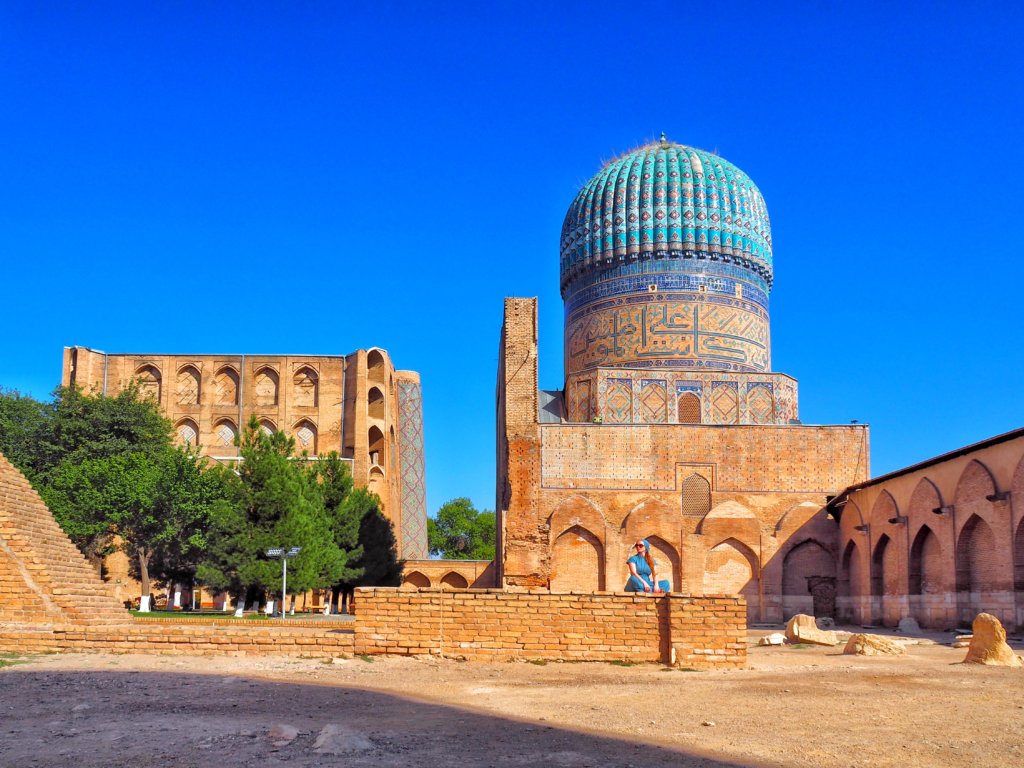
On the way from the Bibi-Khanum Mosque to the Shah-i-Zinda Ensemble, you will pass by the tomb of the former president of Uzbekistan, Islam Karimov, who was in charge of the country almost 30 years and was elected and re-elected with over 90% of the vote until his death in 2016. It is not allowed to take pictures inside.
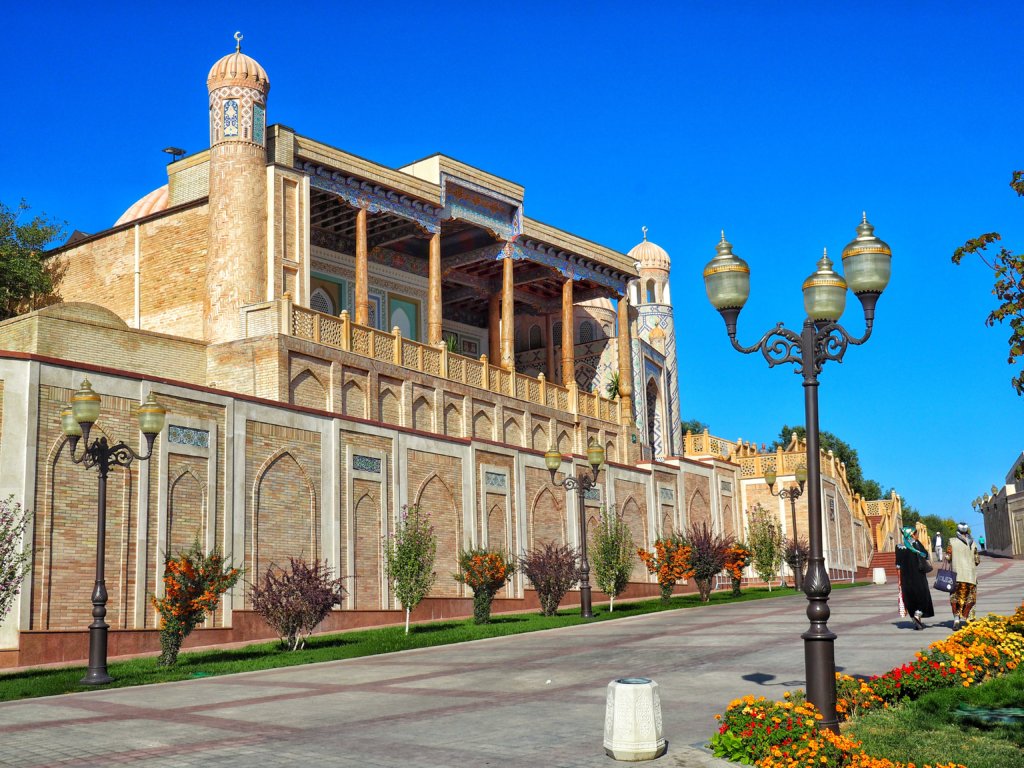
Another sightseeing spot we would recommend you to visit is the Gur-e Amir Complex. The entry costs 25000 som pp and the ticket is good for reentry for three days. This ensemble is a 15th-century mausoleum featuring tombs, mosaics & ornate carvings. The mausoleum houses the tombs of the Turko-Mongol conqueror Amir Timur and his beloved descendants.
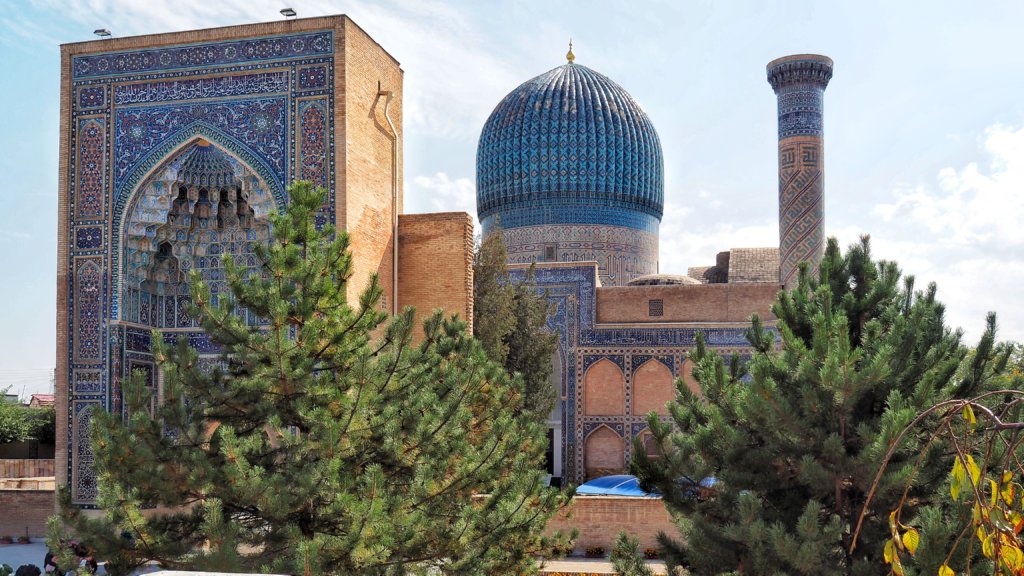
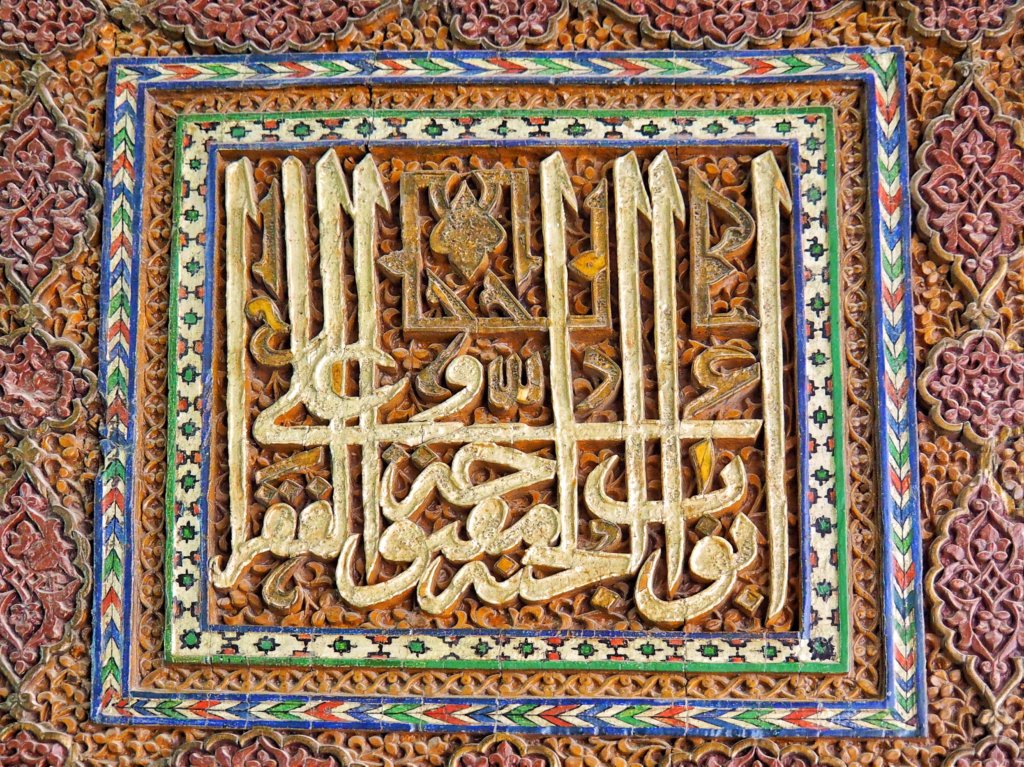
Afrasiyab was an ancient city that was destroyed by the Mongols in the early 13th century. Now it’s one of the largest archaeological sites in the world. The Afrasiyab Museum provides detailed history in Russian but gives only limited content in English. Next to the museum you can visit archaeological excavations which we didn’t find so interesting.
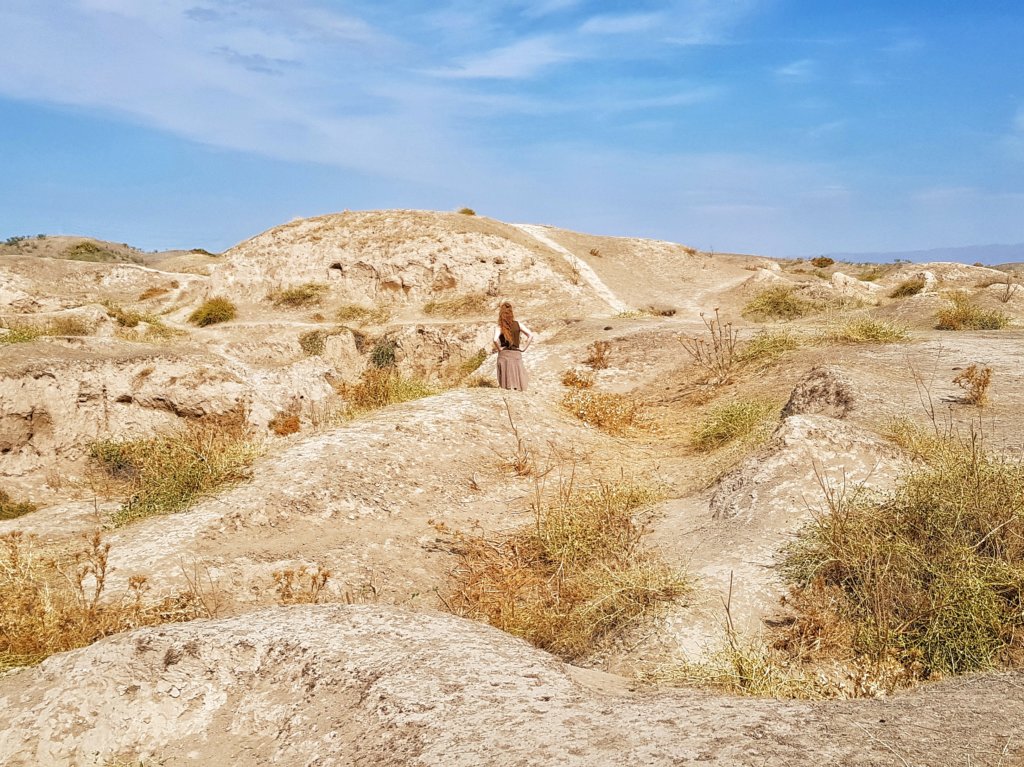
What to do around Samarkand
If you long for diversity, have 5-6 hours extra time and want to do something else besides sightseeing in the city, you can visit Hazrati Dawod (Saint David’s) Cave, one of the holiest places in Uzbekistan. It is believed that David was sent to Asia to preach monotheism. The Zoroastrians chased him, so he had to take refuge in the mountains, in this cave, and praying to God, was able to move apart the stones by his hands and was tucked in by the mountain. At the end of a dark tunnel you can see David’s handprints and footprints. It is believed by the pilgrims that if you pray in this cave and touch David’s handprints and footprints, your heart’s desire will be fulfilled.
The St. David’s Cave is 40 km away from the city and it will take about 40 minutes to get there with a car (we paid 100000 som for a taxi). To get to the Cave, you need to ascend about 1300 stairs leading to the mountain peak. From the top, you need to go down 200 steps to the cave of Hazrati Dawod. Not every pilgrim or tourist is able to climb up about 1500 steps. The locals offer a donkey or a horse to go up the mountain.
It took us about one hour moderate exercise to get to the top (remember, I was out of breath shortly that time). Along the whole length of the stairs there are shopping stalls selling water, snacks and different souvenirs.
On the top of the mountain, you will be rewarded with a view of the beautiful landscape and a gulp of clean fresh air. By the way, if you don’t want to get to know the camels resting on the top too close, don’t hide any bread in your pockets or backpack – I was followed by one very sensitive animal into flight as I was quite unsure at that moment if camels bite and if my vaccination status was sufficient…
Where to eat in Samarkand
In Samarkand, we have eaten twice at the Bibikhanum Teahouse (next to the Bibikhanum Mosque) as we simply haven’t found anything better in the tourist area. In this cafe you will enjoy nice ambiance, tasty local food, excellent service and very affordable prices! By the way, pelmeni and manty (respectively smaller and bigger in size steamed dumplings filled with meat and served with sour cream) were the tastiest ones I have tried in a long time!
One day for lunch, we spontaneously dropped by in cantine Laxza on the University Boulevard, where the locals eat, and savored lagman soup and meat kebab. Unfortunately, I cannot find the exact location on Google maps and on the Internet.
Our taxi driver also recommended to try local dishes “chalisa” and “tandyr”, but unfortunately we didn’t have enough time to search for it.
I’m pretty sure there are plenty of other decent restaurants in Samarkand, but during this trip we didn’t manage to fit them into our sightseeing route.



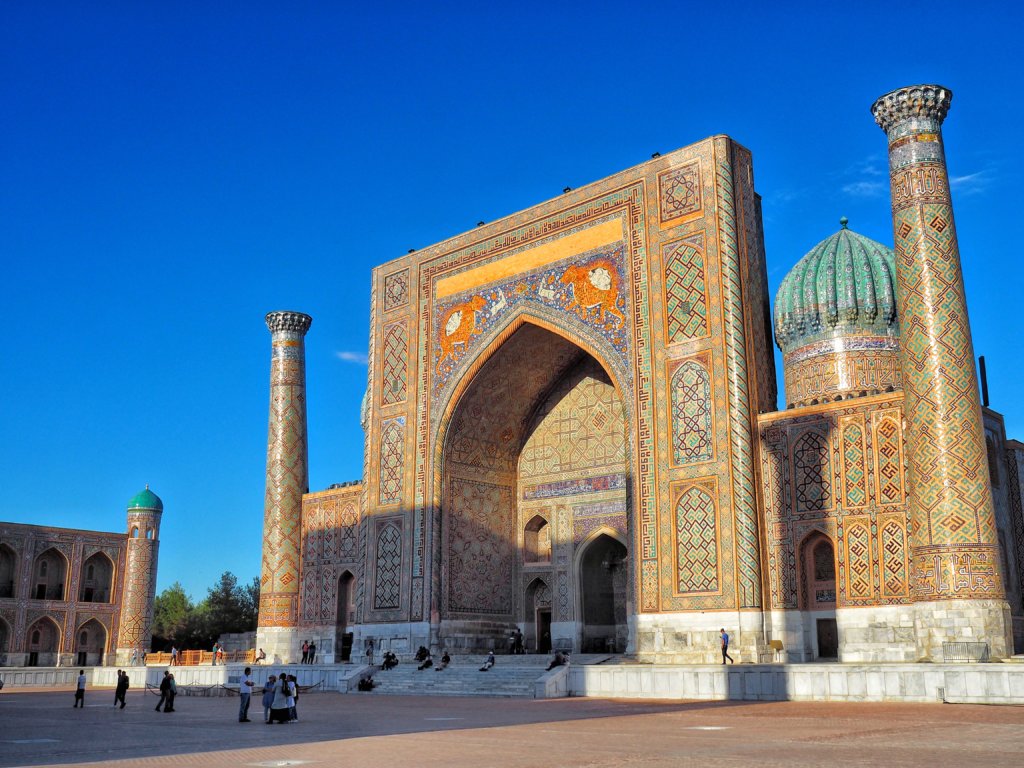

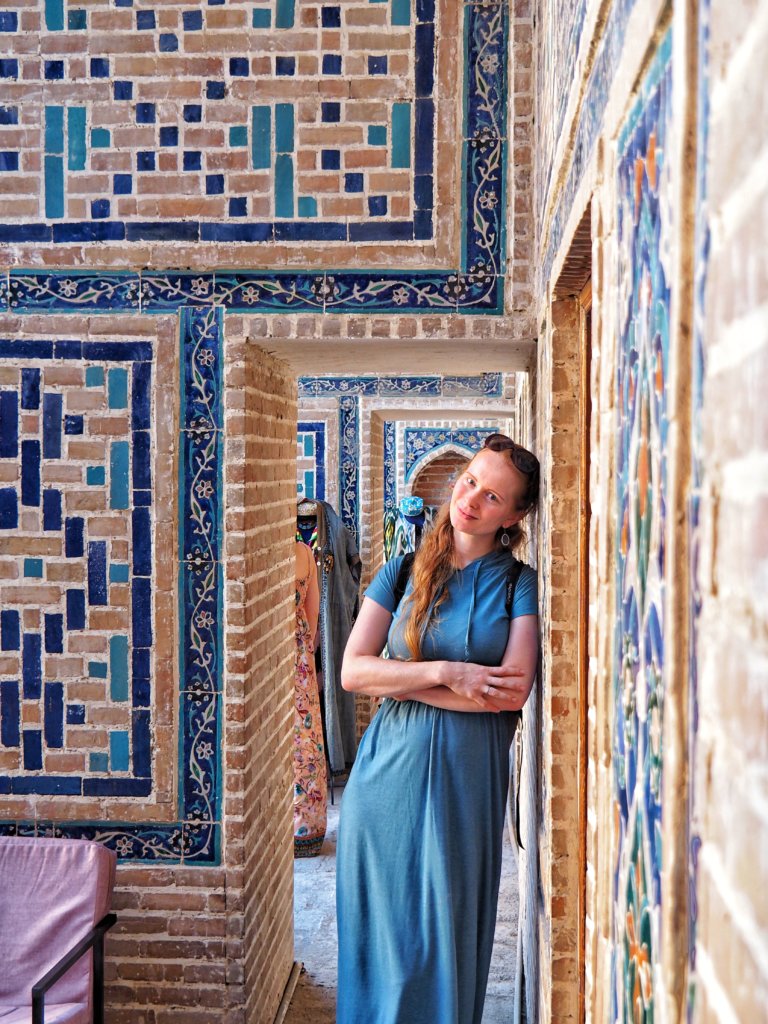



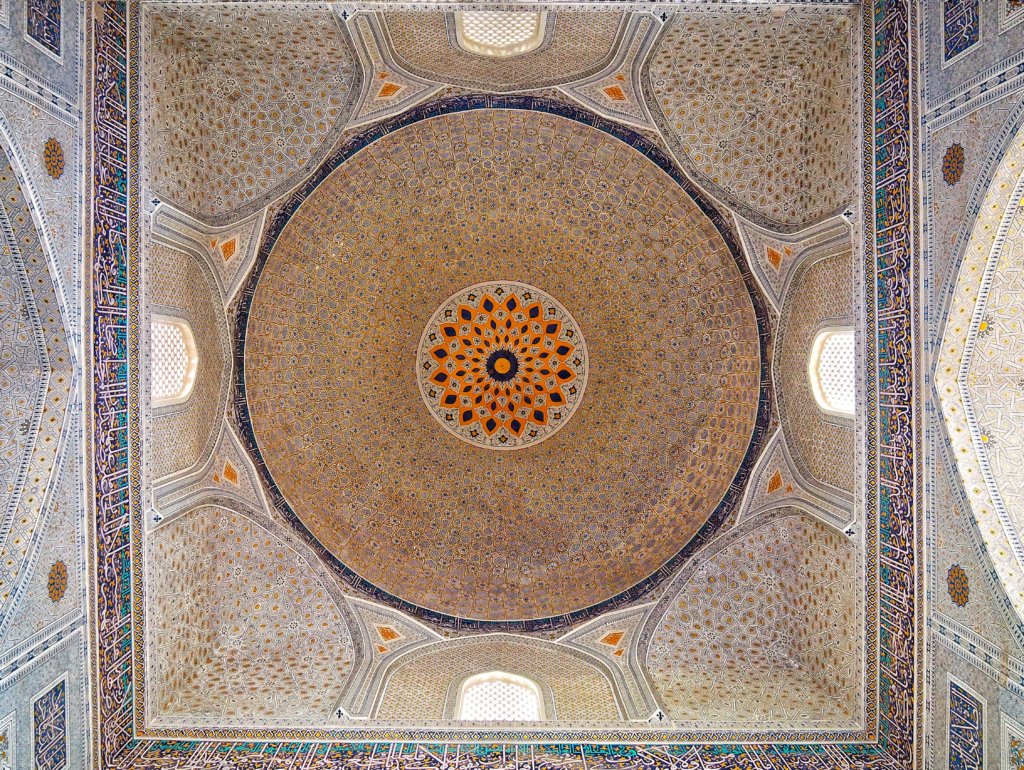
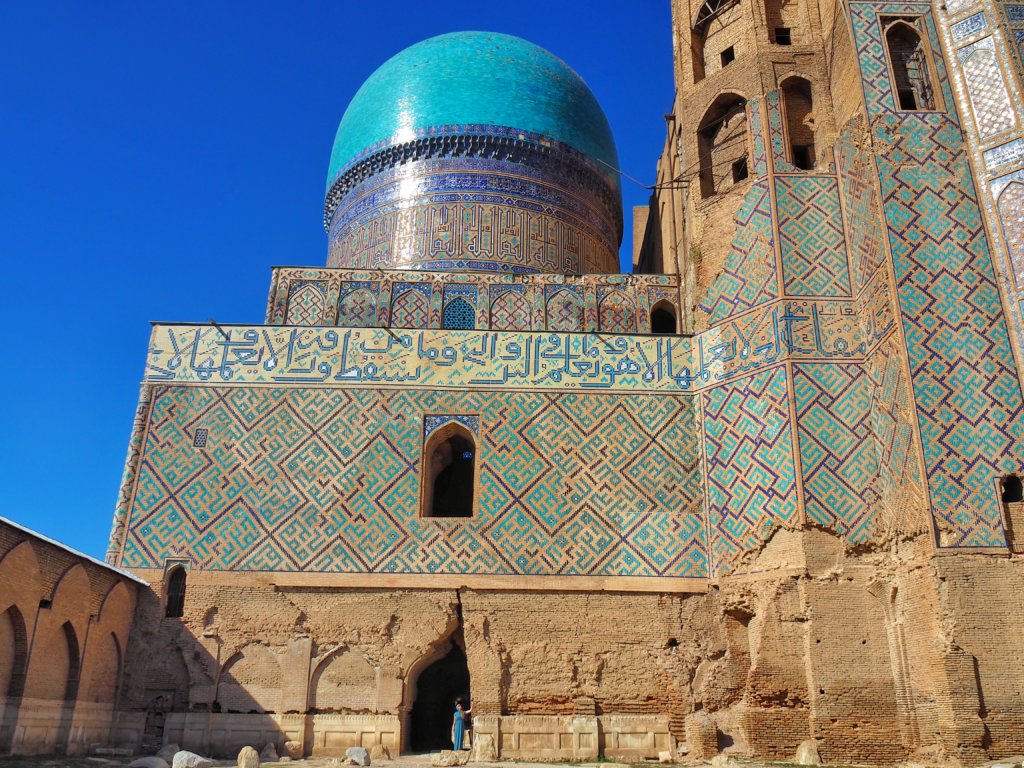
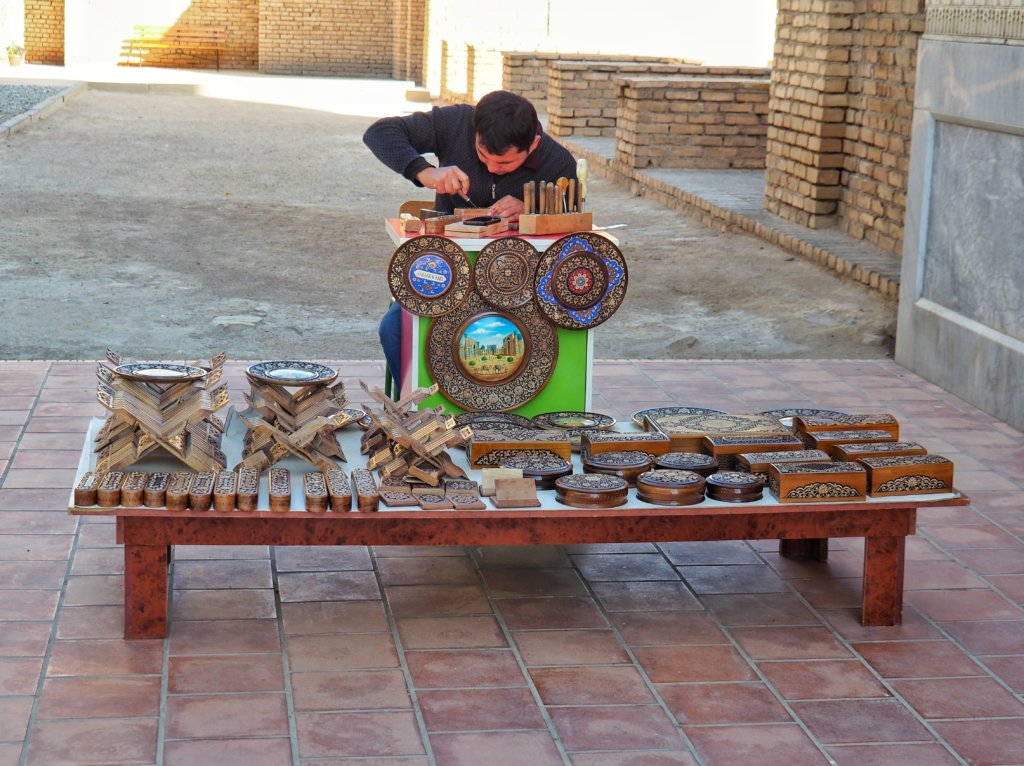
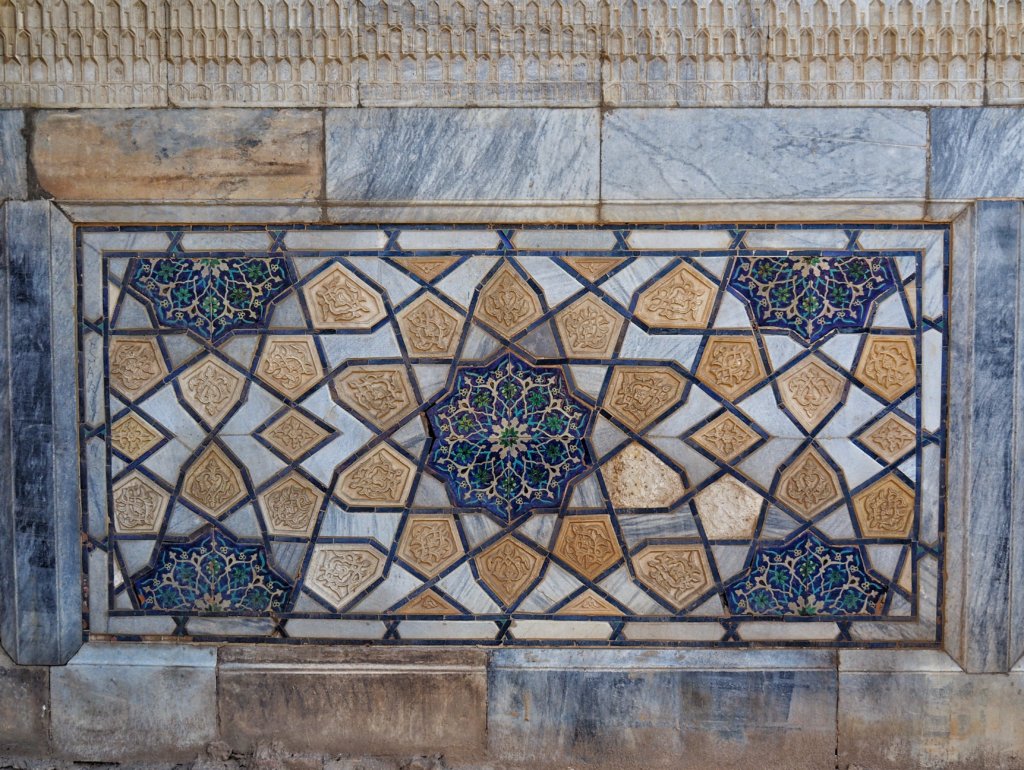

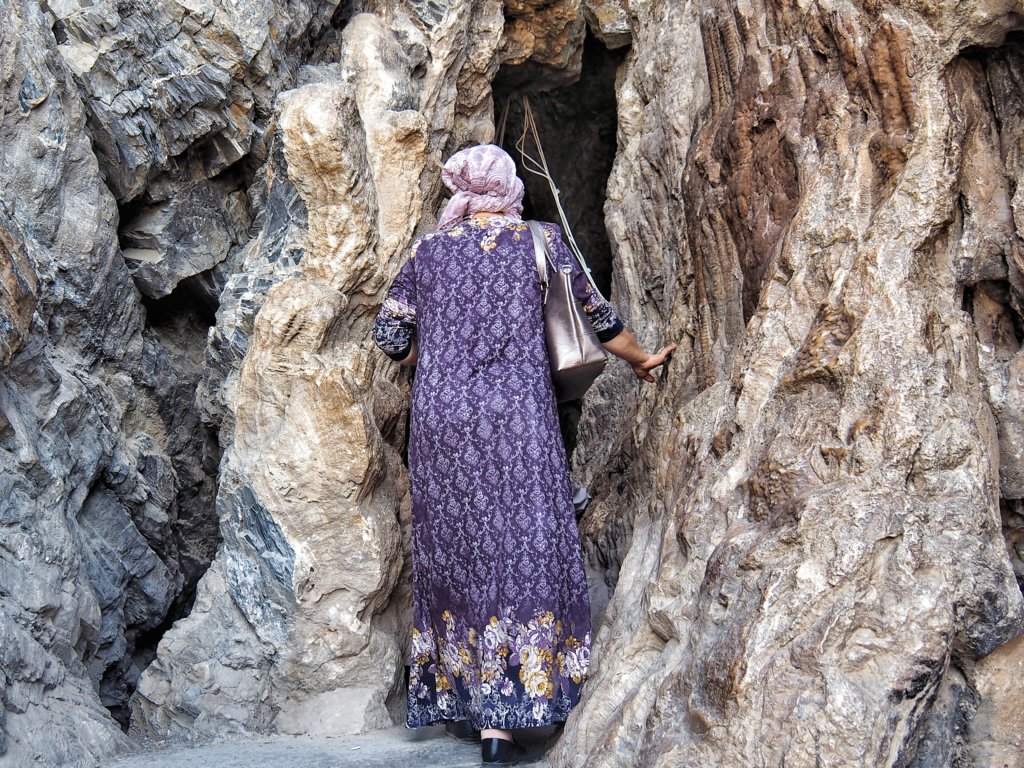
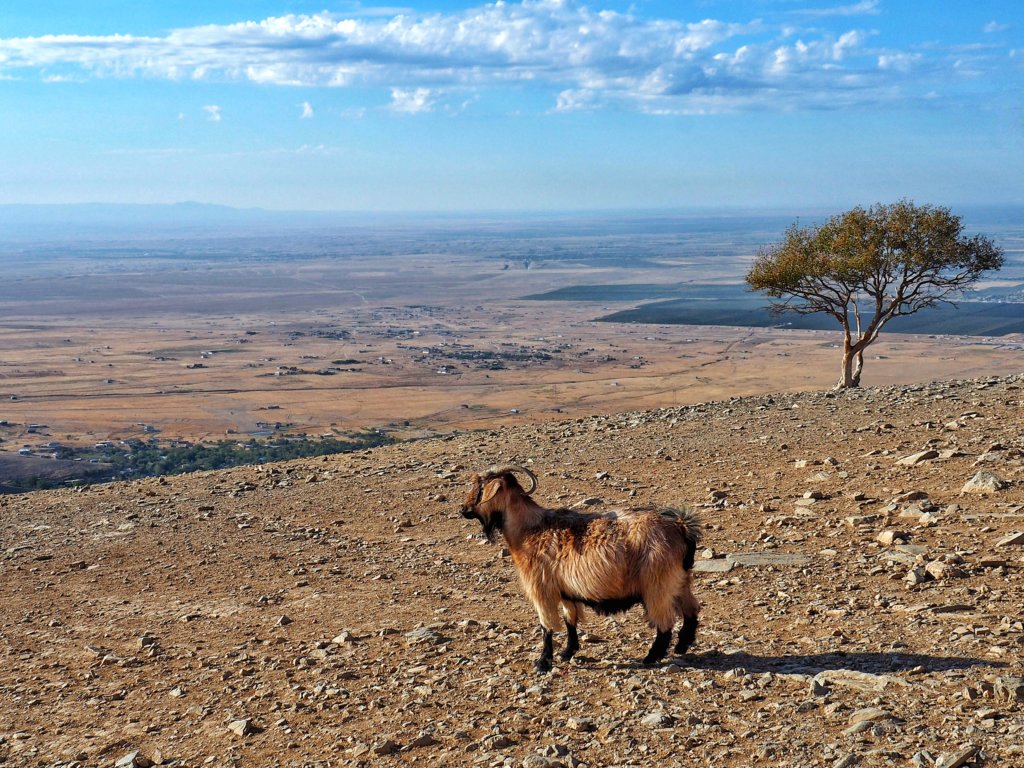
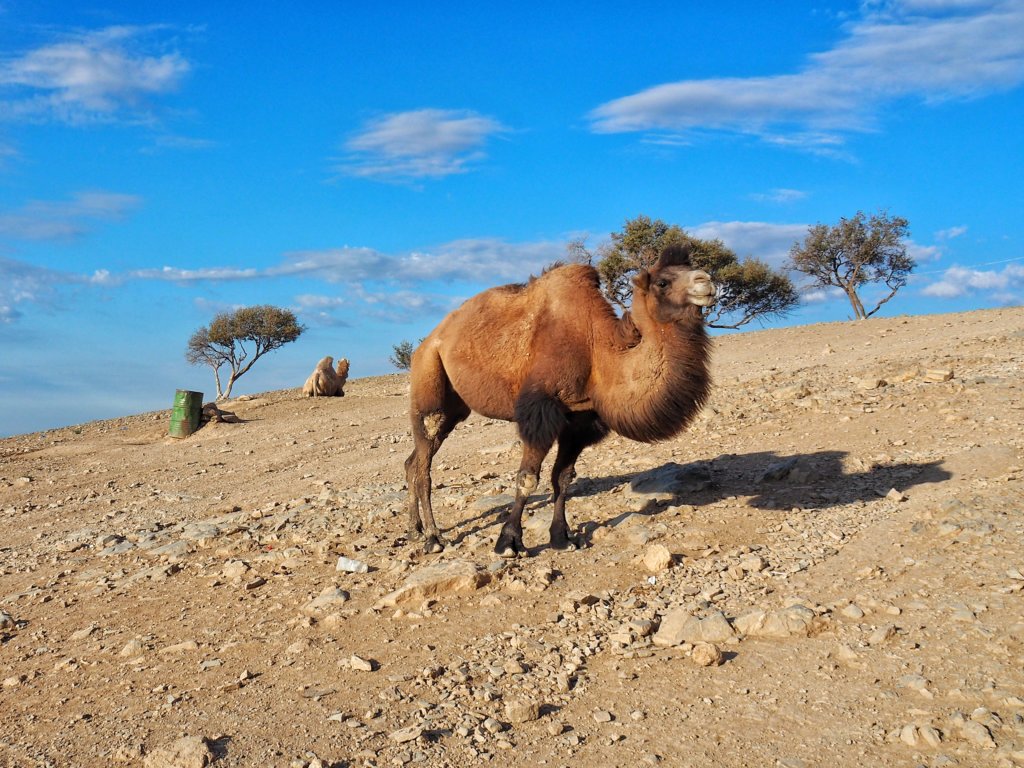
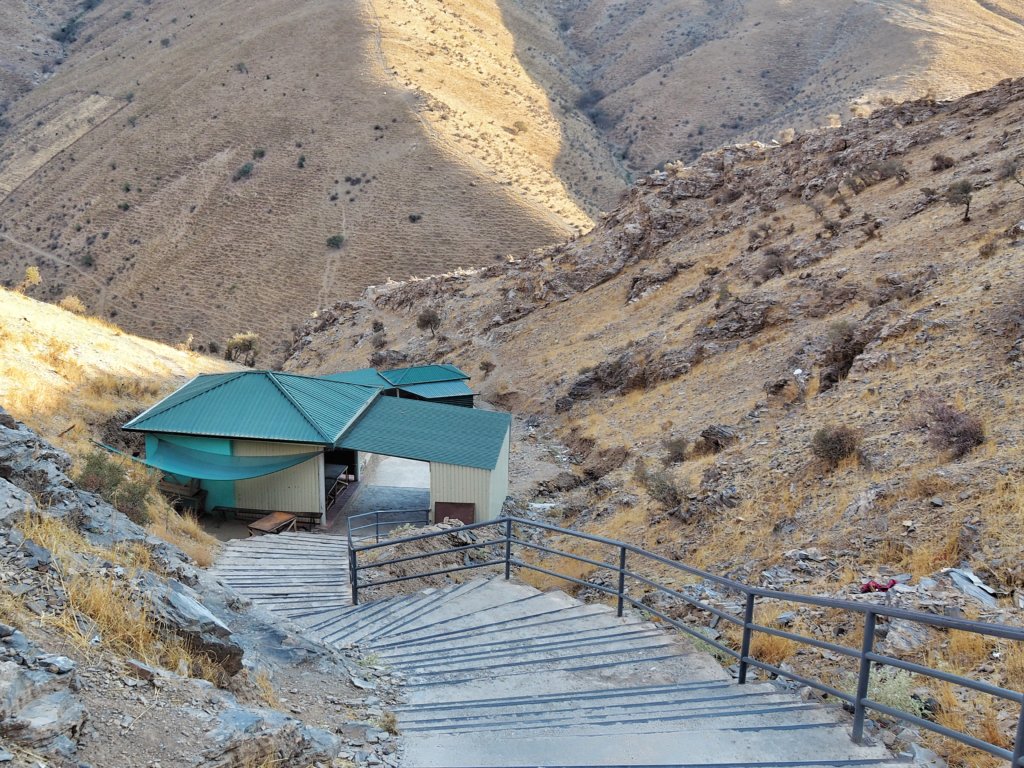


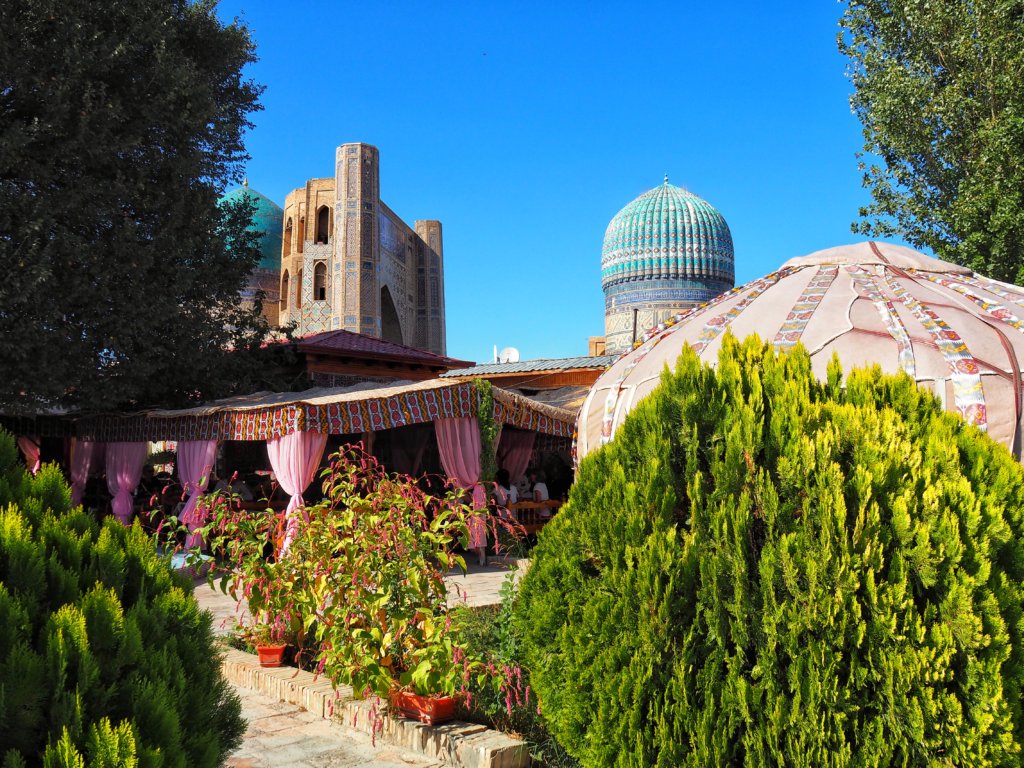
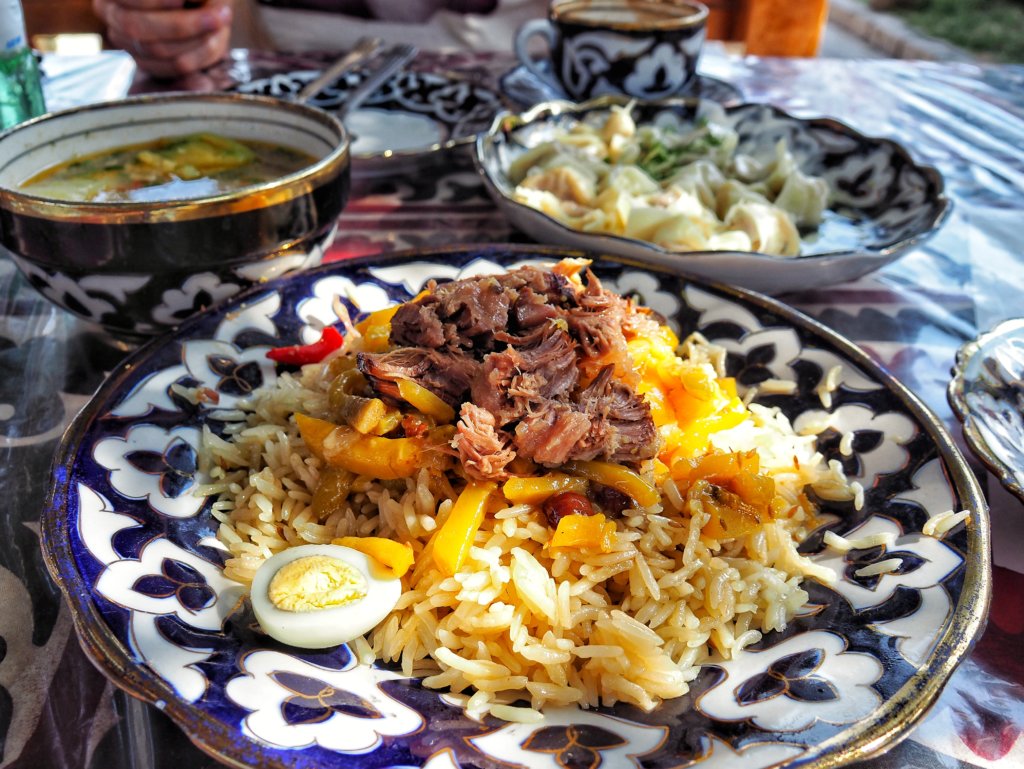
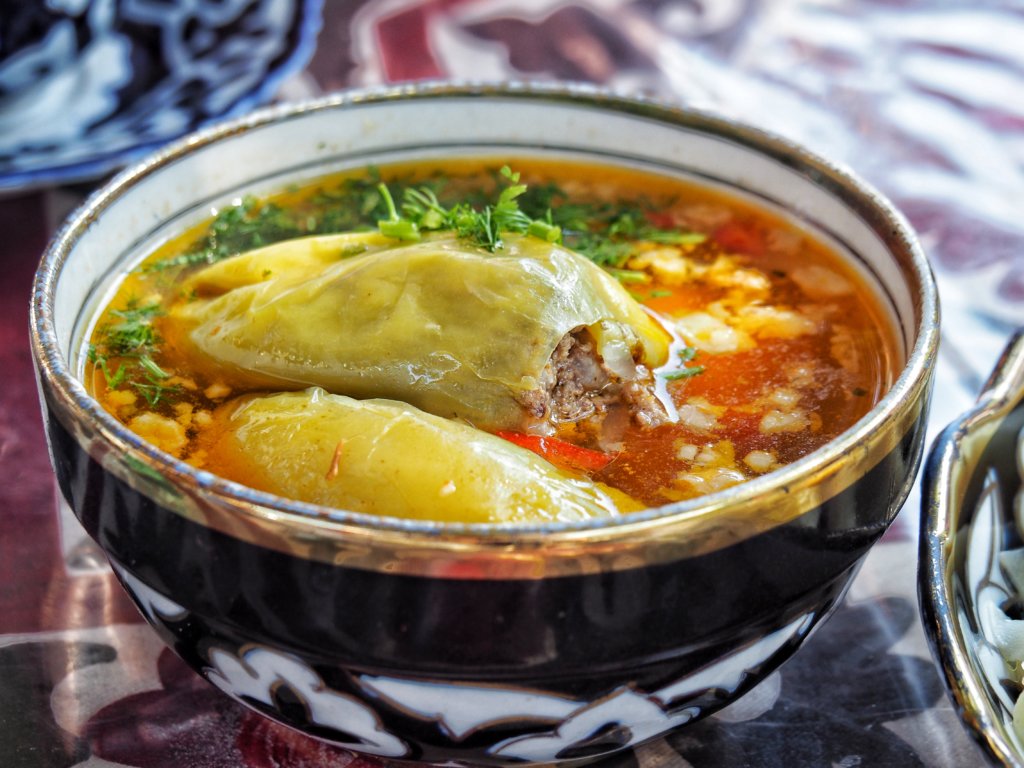


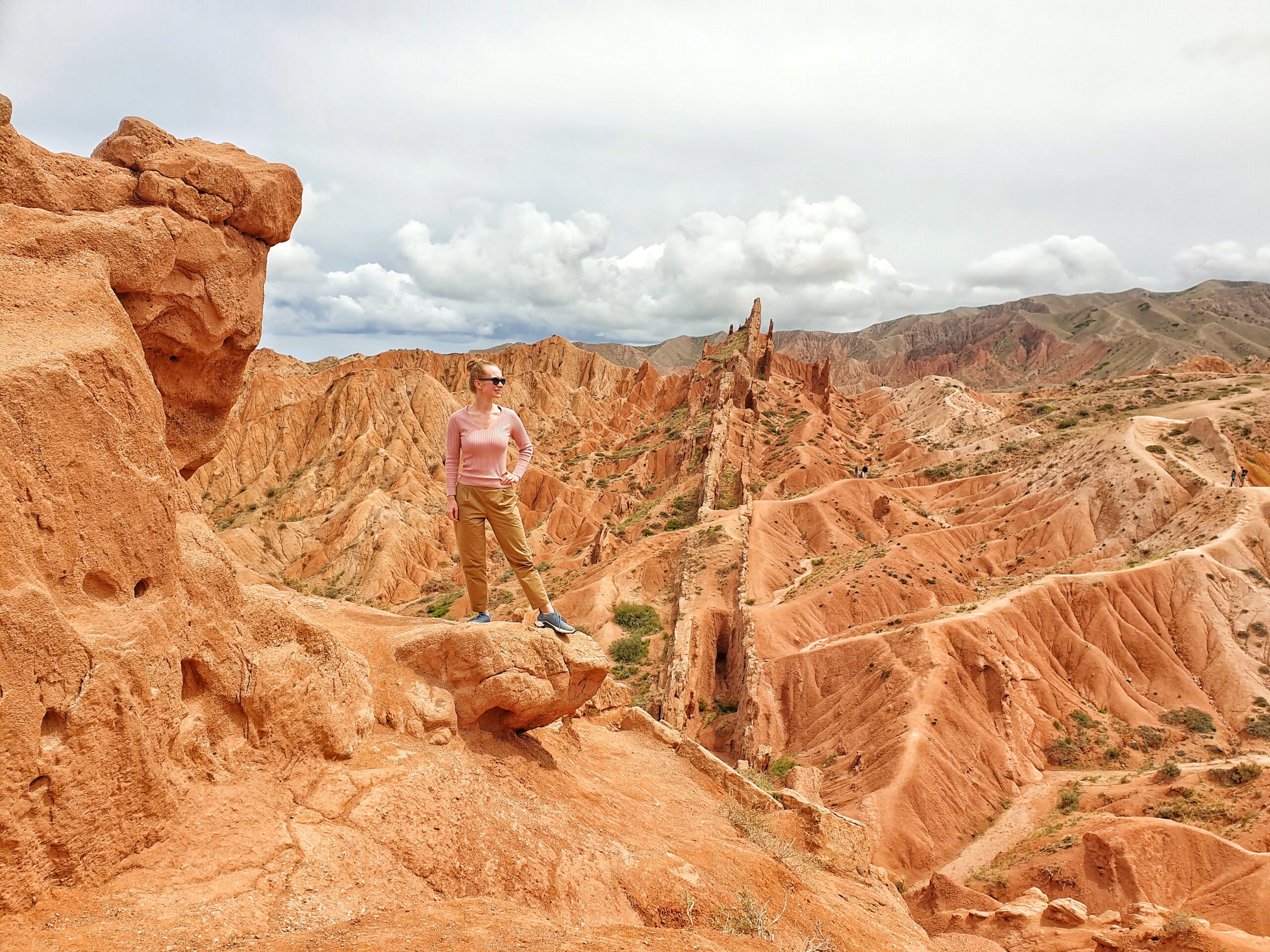
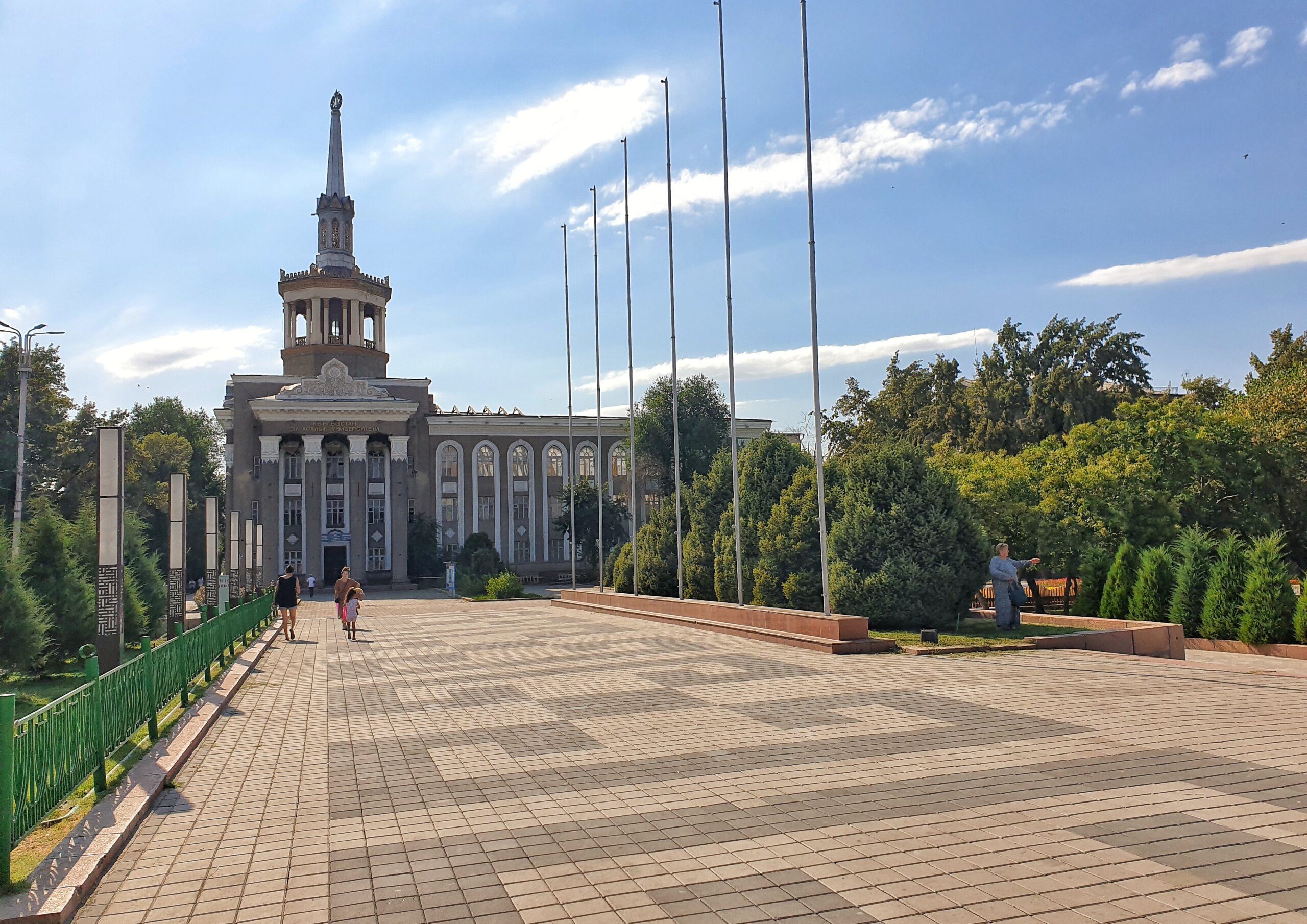

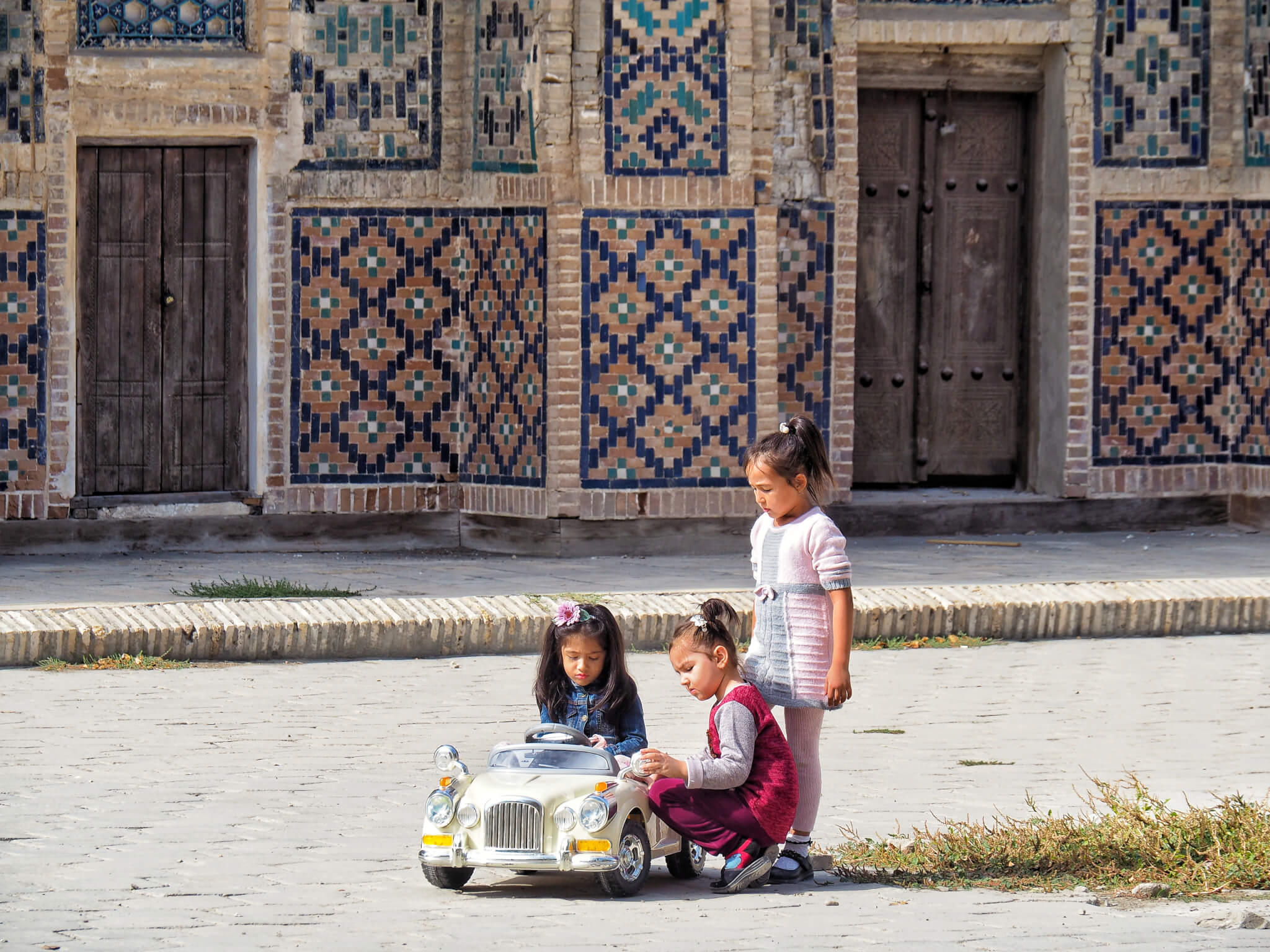
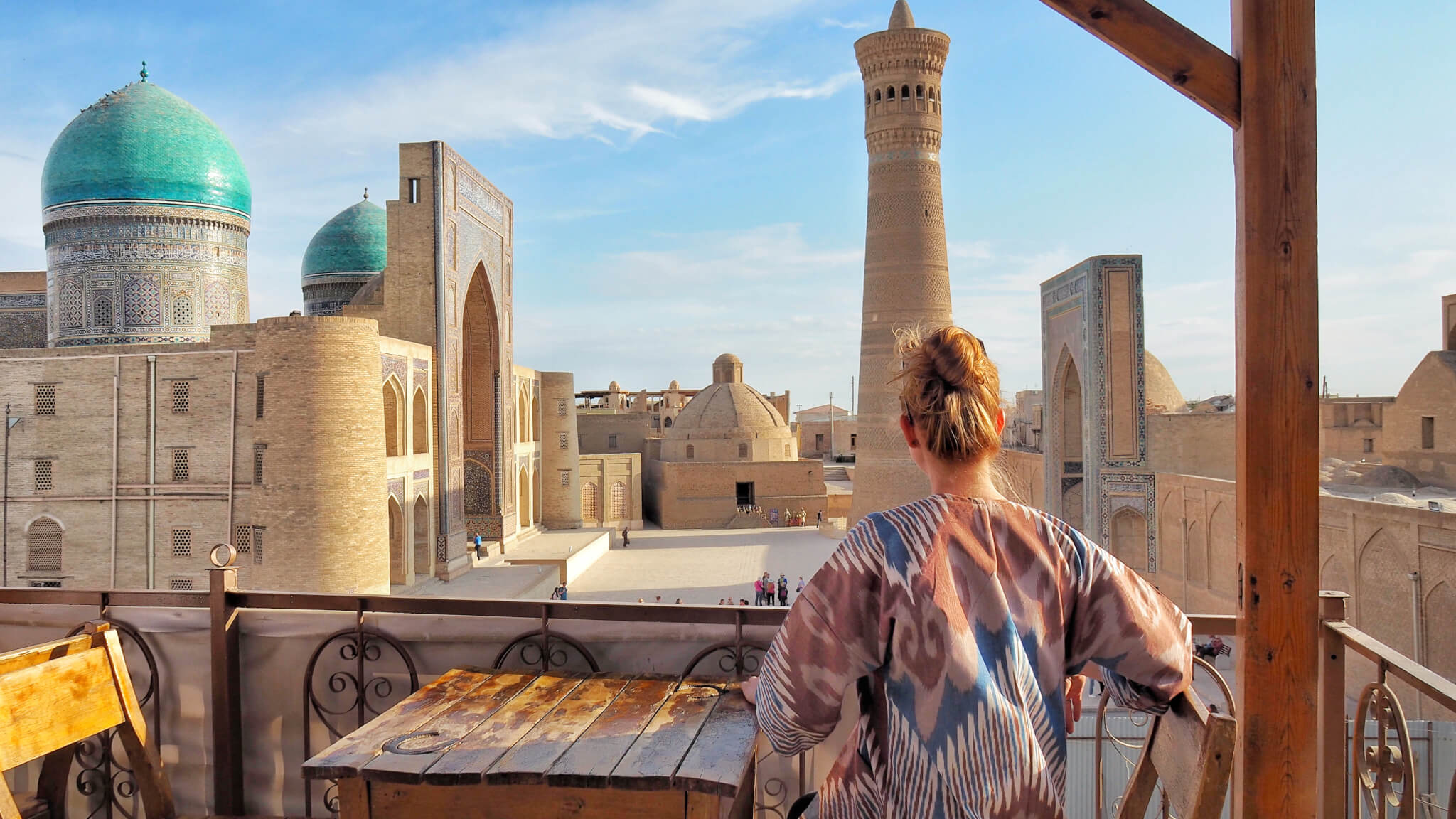
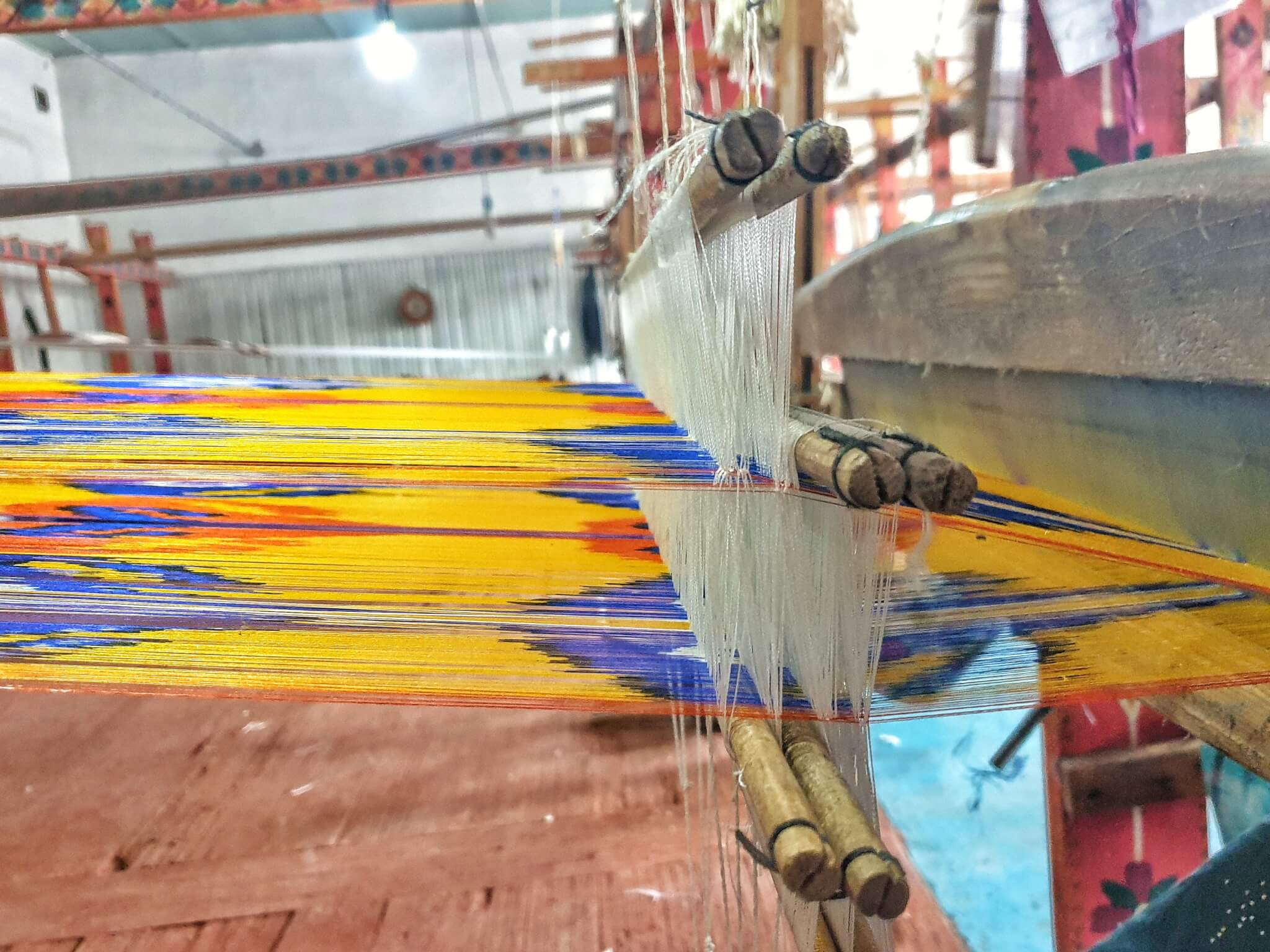
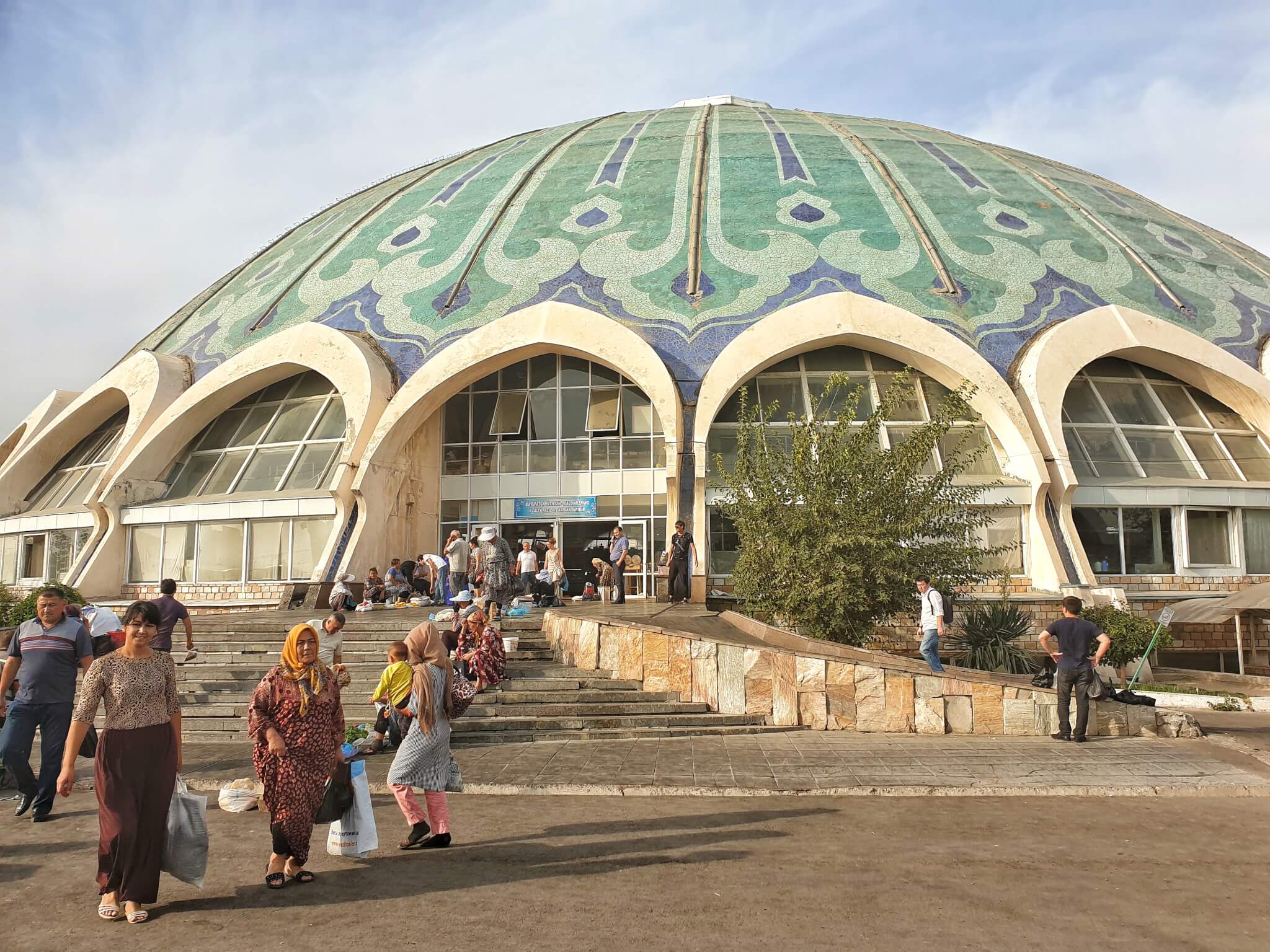
Leave A Comment